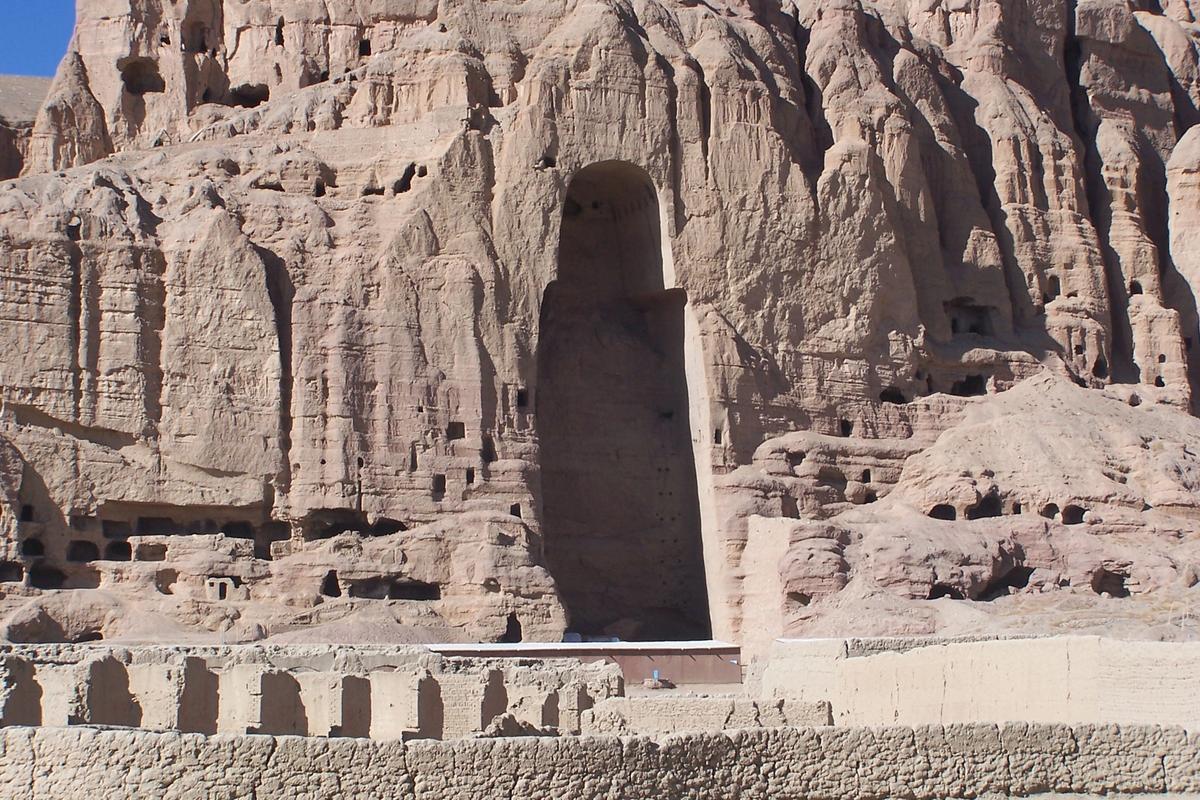The withdrawal of US troops from Afghanistan has created a cascade of conflict with victims on all sides. The human tragedy must be addressed urgently, but with the return of the Taliban, who have a documented history of attacking art, there is also a potential cultural catastrophe that must be stopped. The Association of Art Museum Directors (AAMD) has established protocols for protecting cultural property at risk from conflict, and we must hope that those protocols, or steps like them, are being followed.
We have been here before. In 2001, the Taliban destroyed the Buddhas of Bamiyan, monumental sculptures carved into a rock wall that had endured for centuries, and many portable artefacts. The sack of the Baghdad Museum in the wake of the US invasion of Iraq in 2003 was an infamous failure to take adequate care of irreplaceable cultural artefacts. But these are just two examples of identifiable risks. And though the holdings of the National Museum of Afghanistan are currently said to be safe, their fate and the fates of objects outside its collection are uncertain.
In 2015, the AAMD put into place Protocols for Safe Havens for Works of Cultural Significance from Countries in Crisis, establishing a structure under which museums can act to protect cultural property in immanent peril. They outline circumstances under which objects can be taken into a museum’s care and how those objects should be subsequently returned.
Essentially, the protocols allow museums to take at-risk objects into their custody and hold them until safe return to the source country is possible. But many risks accompany this laudable goal. How can institutions ensure that they comply with applicable law? How do institutions determine whether those presenting the objects for safekeeping have authority to do so? And, crucially, how does an institution determine when and to whom objects should be returned? The protocols acknowledge these issues and also the impossibility of complete foresight, so some latitude was deliberately included lest overly detailed guidance obstruct implementation.
As an attorney who has spent nearly 20 years working on claims to looted art and artefacts, I know that the risks to institutions are not theoretical. Claims are made against museums by source countries for objects believed to have been taken in violation of law and there is a history of looting. Museums face the possibility that taking objects into their care, whatever the motivation, might create claims with tangible and intangible costs: staff time, legal advice and potential controversy. The protocols allow museums to accept these risks (after careful consideration) in service of the greater goal of preserving irreplaceable objects.
There is also a risk that outsiders’ protective measures may be perceived as condescending, colonialist or even opportunistic by the source country. External institutions taking possession of Afghanistan’s cultural property might not be applauded—particularly if the objects are taken to the US or any other country that helped it during the long war. The protocols foresee this (and the danger of shipping delicate objects over long distances) and suggest that objects be removed “to the closest safe haven possible”, so evacuation to North America or Europe need not be the first solution.
In the context of a Taliban takeover of Afghanistan, concerns about intervention are outweighed by the dangers. The Taliban have a well-documented history of destroying objects that do not fit within their world view. And there is no reason to think a new Taliban regime will act differently.
We will soon see whether the US, its allies and museum professionals have planned in advance for the safety of Afghanistan’s cultural heritage. The dangers were undisguised, and the AAMD protocols provide a map that any organisation—not just member institutions—can use to further a mission to safeguard threatened cultural property. Moreover, there is precedent for the work, as demonstrated by the history of the Monuments Men, who protected Europe’s treasures during and after the Second World War. Hopefully, proactive measures have already been taken and organisations that may be safe havens for Afghanistan’s cultural property will also act immediately to lay plans to return it at the appropriate time.
• Frank K. Lord IV is an attorney, based in New York, who specialises in art and cultural property law


